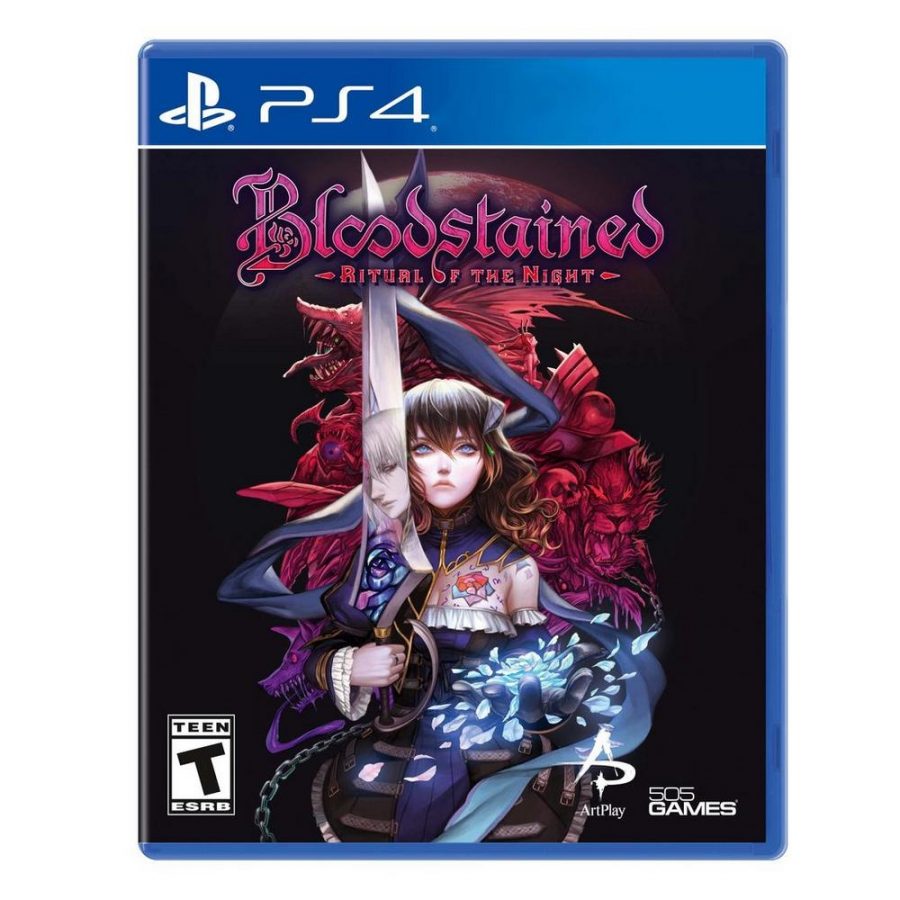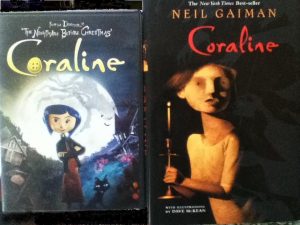Bloodstained: Ritual of the Night review
October 7, 2019
Bloodstained: Ritual of The Night was released on June 13th, 2019. The game itself has an interesting history: Koji Igarashi, director of the Castlevania games, left Konami a few years ago to make his own company, Artplay. Igarashi used this opportunity to crowd fund the company’s first games, Bloodstained: Curse of The Moon, and Bloodstained: Ritual of The Night.
The first one, Curse of The Moon, is similar to a classic action adventure game, like Castlevania or Megaman. Ritual of The Night, unlike the first game, is a Metroidvania, like Castlevania: Symphony of the Night or the entire Metroid series, hence the name Metroidvania. Metroidvanias are games, typically side-scrolling platformers, in which you explore a large area, in this case a castle, and collect a lot of power-ups. These games tend to have a lot of backtracking. Players who enjoyed the Castlevania series will love Bloodstained: Ritual of the Night, where they play as Miriam, a Shardbinder that must go through a castle until they find and defeat Gebel, another Shardbinder.
Nine years before Ritual of The Night takes place, there was a war between humanity and demons. A group of alchemists tried to find a solution to the demons, and eventually made the Shardbinders: humans infused with crystals that attuned them to demonic powers. Shardbinders would go on to fight the war for the humans, none of which were ever seen again with the exception of Miriam, who was in a coma, and Gebel, who was completely fine and now wages war on the church for creating the Shardbinders, who were treated as monsters.
The gameplay takes a lot of inspiration from the Castlevania series, and those familiar with the franchise will be happy to see this mechanic return. Since Miriam is a Shardbinder, when killing a demon, there is a random chance that the monster will drop a shard. Miriam absorbs the shard and gains an ability based on the monster that dropped it. A lot of the weapons that players can get in this game work similarly to that of the previously mentioned Castlevania games, but a plus side is every weapon is balanced, meaning there’s actual purpose to using every weapon type in this game. Players will also be more likely to use every weapon in the game because certain enemies are easier to take out with certain weapons.
Bloodstained: Ritual of The Night also isn’t short on exploring. The map is huge; I am 8 hours into the game and don’t even have 50% of the castle explored. This is unlike Castlevania, where 8 hours in the game would be finished. This is another upside: the game is long. The problem with most Metroidvanias, Castlevania specifically, is the games are short, but Ritual of the Night is not.
Something else that’s good is the game remains difficult, unlike some of the other games Igarashi developed. For example, in Castlevania: Portrait of Ruin, the game starts off decently difficult, but once you get Nebula, which you get very early on, the game becomes a breeze and honestly very boring. However, Bloodstained: Ritual of The Night remains difficult and fun, with Nebulas or overpowered great swords to carry players this time. It’s clear Igarashi learned from his mistakes in previous games and improved his game greatly, and they even made shards drop more often than souls in Castlevania: Aria of Sorrow and Dawn of Sorrow.
While the game has fixed a lot of issues, it also has a lot of its own problems. The game looks beautiful, but the animations just look awkward, with shots staying on someone’s face for too long or walking animations that look questionable. The models also sometimes looks weird, especially Miriam, and this is particularly bothersome because players have to stare at her the entire game. Also, when the game was announced, people were excited for the crafting system, but it is really fairly useless. Better weapons can usually be found just lying around in the castle than can be made at the time, even with adequate materials (which are rarely available anyway; materials have an absurdly low drop rate, and dismantling things usually doesn’t render the needed materials).
On the bright side, preparing food and enhancing shards are actually pretty useful. Even if I used the same few shards throughout the game, I found the increases to the shards I did have super helpful. Preparing food is also useful as you’ll probably have the stuff to make the food, and they give permanent stat increases. However, when it came to getting new weapons or potions, it’s best to just go to the shop, which becomes problematic because players aren’t likely to have the money to buy the potions needed because when the game does give money it gives it in small denominations.
Overall, this is a really good game worthy of a 9/10 rating. It may not be my favorite Metroidvania, but it’s one of the best I’ve played. The game makes almost everything useful and the task remains difficult aid interesting throughout the whole game. The game doesn’t hold your hand and respects the player’s intelligence, like most games should.









